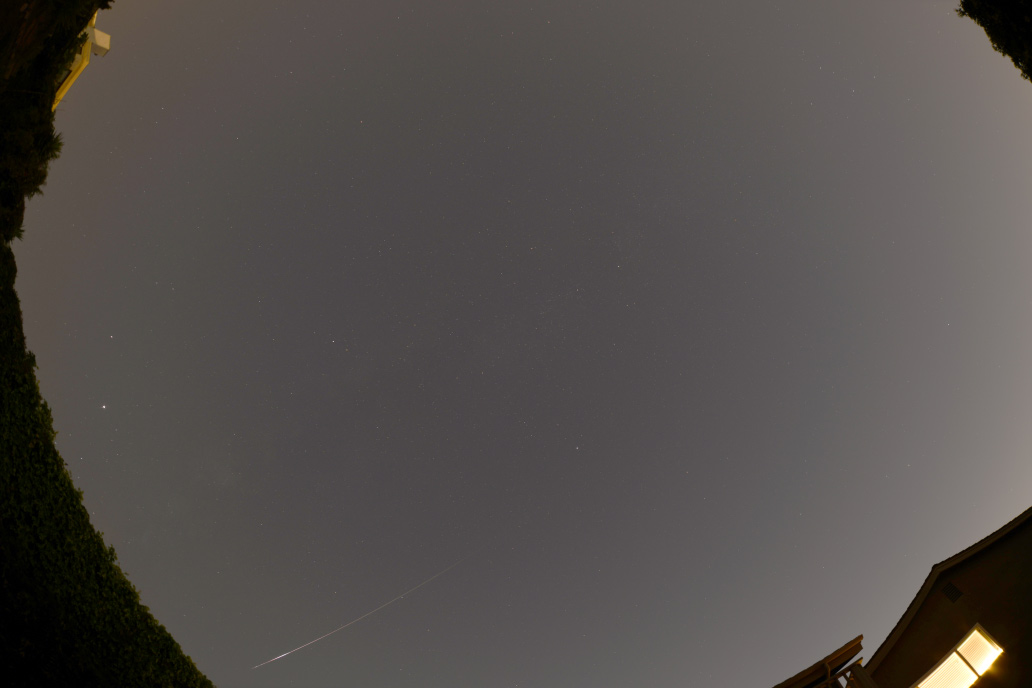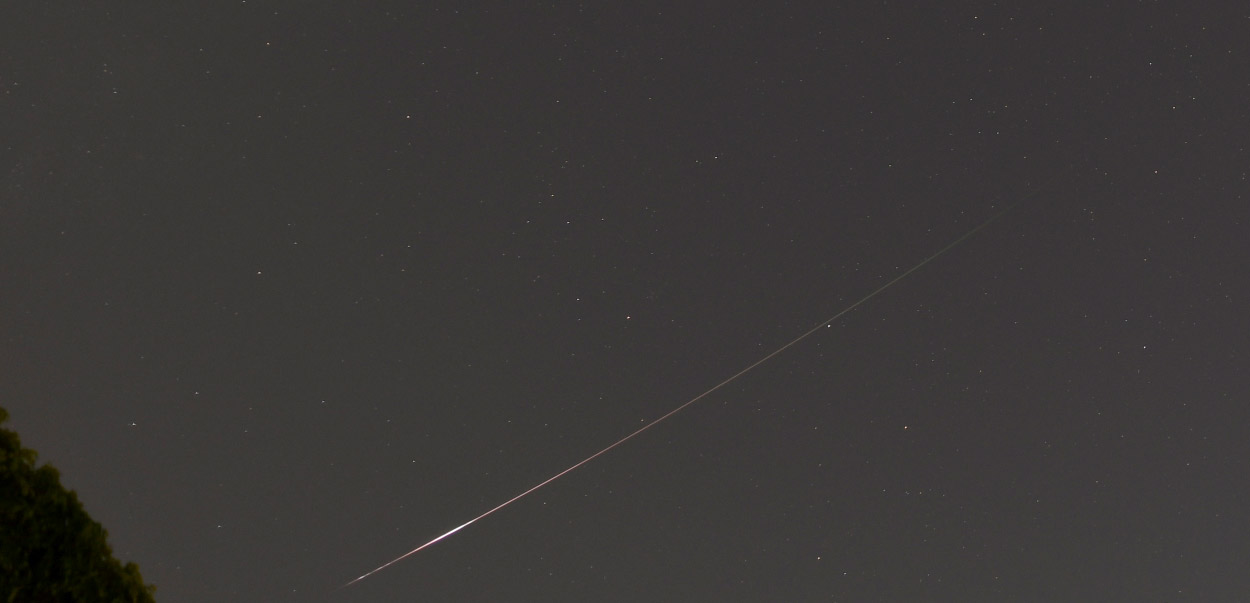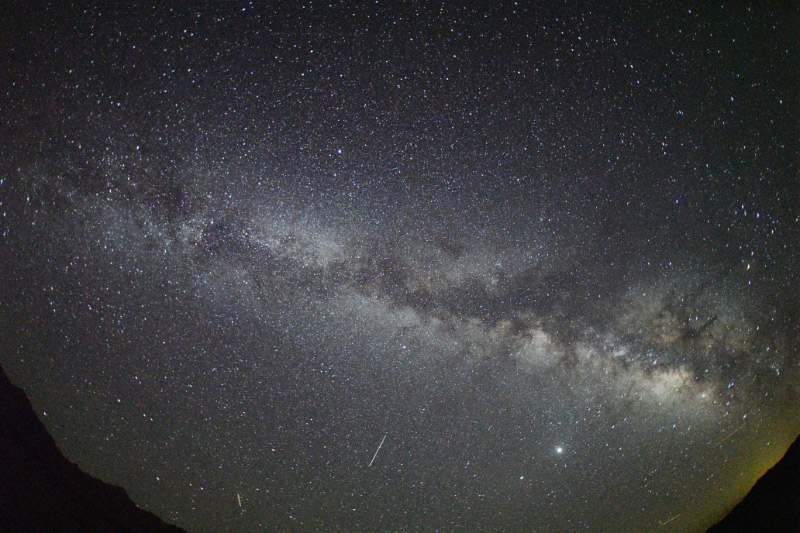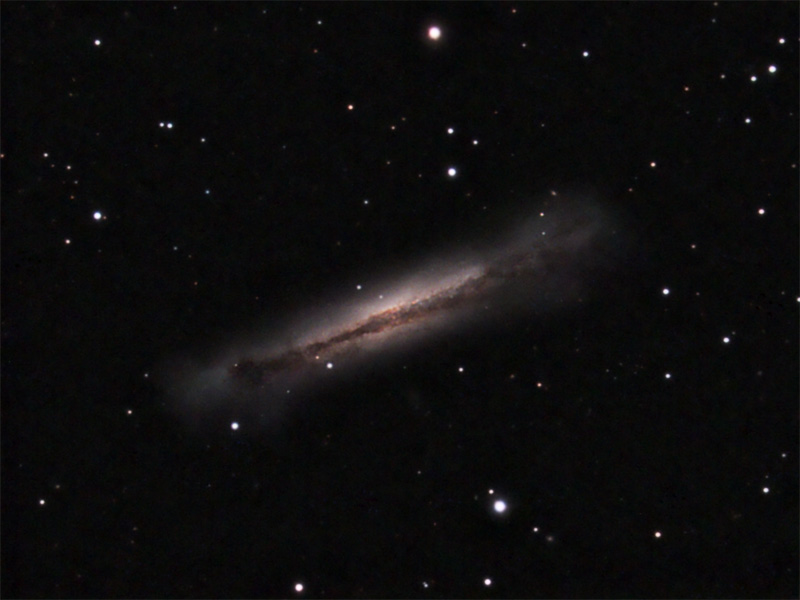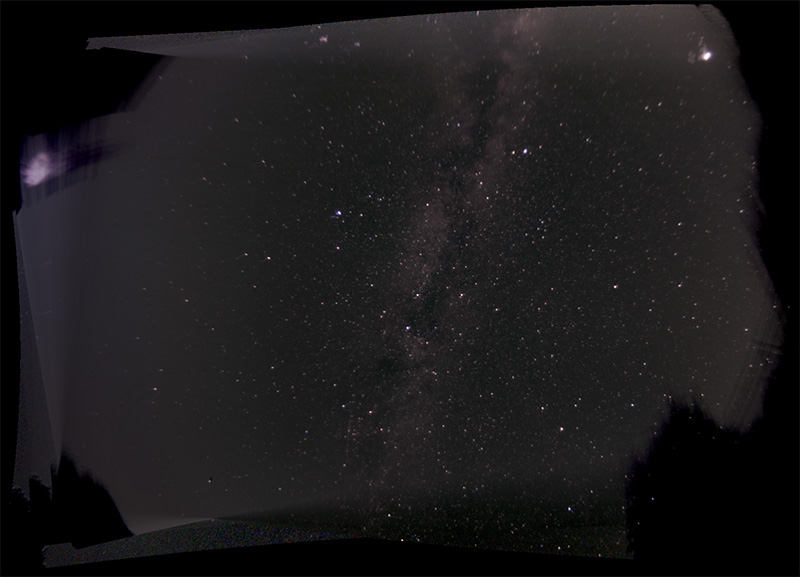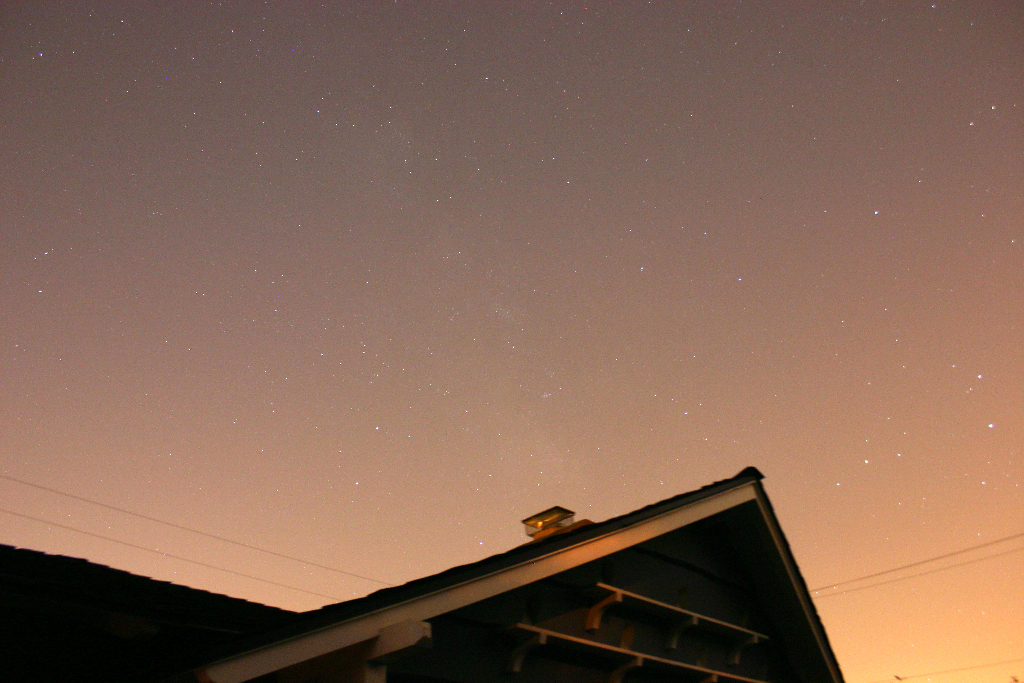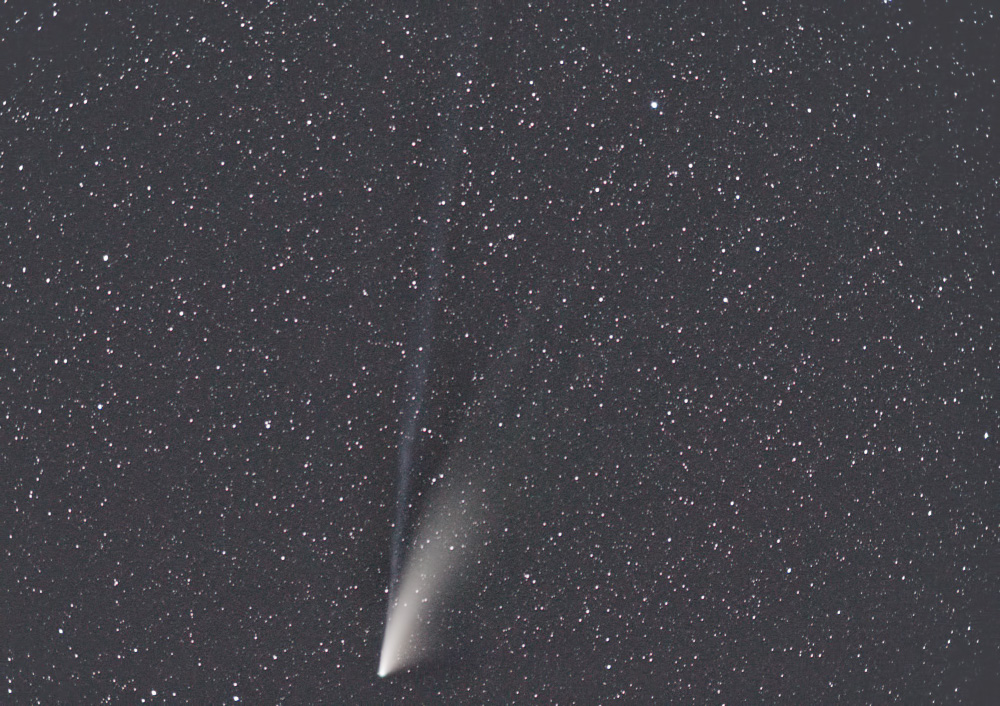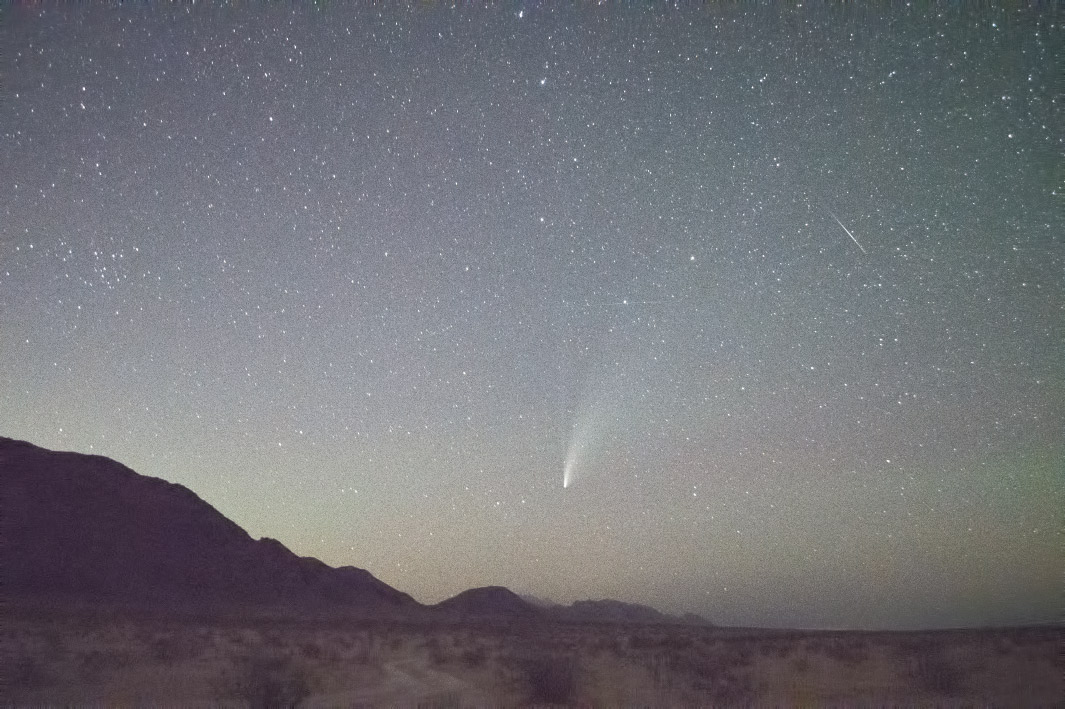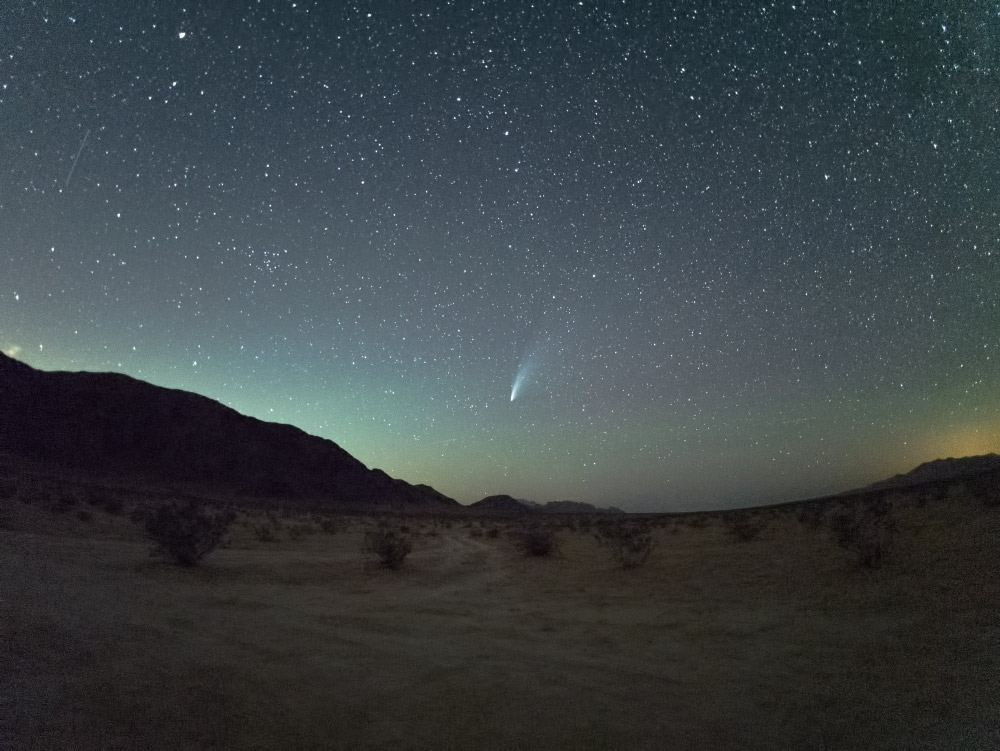Here are my NEOWISE images from the Mojave.First, a starlink photobomb (a/k/a) Elon plays space invaders:
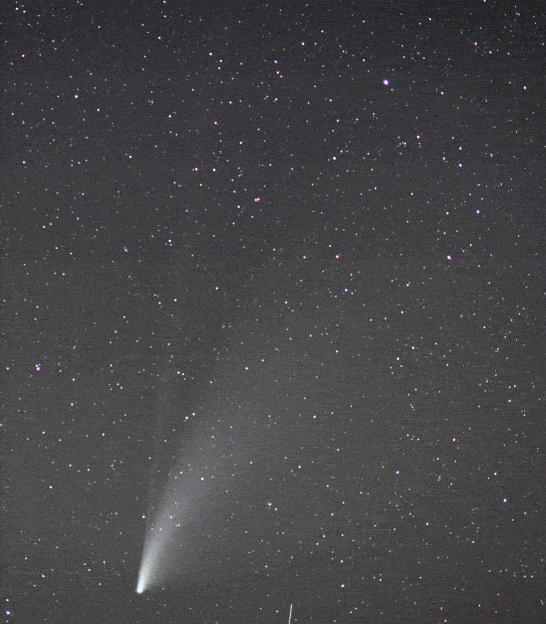 |
comet NEOWISE C/2020 F3 animation, series of 3 second exposures 7/21/20
|
close up stacked image (removing star, comet, satellite and plane trails):
wider view with a bonus early perseid:
still wider (fisheye):
Thanks to OC astronomers member and renowned astrophotographer Wally Pacholka for the inspiration:
"Gents With a comet like Neowise dropping by only every 20 years or so, can I encourage folk to see and photograph it from a dark location so you can enjoy it’s true beauty. Do whatever is necessary to leave Dodge and get out of town."
his NEOWISE images are available here:
Observations/Travelogue
taking a tip from wally, i headed out to amboy crater, in the Mojave desert
 |
Amboy Crater
|
an ideal location due to the absence of light pollution in the northwest where the comet would be setting:
after a bit of reconnoitering, i opted for a location a bit south of the crater then made a few minor adjustments for local wild life:
 |
| snake spoor |
visually, the comet was spectacular, spanning 5 degrees of sky (10 degrees with binoculars) almost as bright as the milky way, though more focal.
photographically, saturday night (7/18/20) was a bust. it seemed my 10 year old nikon D 60 which was fine in light polluted skies was not up to dark skies in 100 degree heat (but it was dry heat)
A rare case where the camera is less sensitive than the eye (or cellphone):
 |
Nikon D60 stacked and processed
|
cellphone:
 |
Samsung Galaxy Note 9 single frame
|
having flailed with my Nikon D60 Saturday night, i went back out to the desert Tuesday night to try again, armed with a better camera (rented nikon D850) and more glass.
This time at the sheep hole valley wilderness (south east of amboy) just north of eastern joshua tree.
the sheep hole mountains on the left of the widefield are shielding the barstow (and 29 palms) light dome which i assume can be seen from much of joshua tree when looking NW:
Image details:
sheep hole valley wilderness, mojave desert, CA
7/21/20 ~9:20-11 PM pacific
nikon D850
close up AF-S NIKKOR 85mm 1:1.4G
10x stack 3 seconds ISO 25,600!
stacked in deep sky stacker
intermediate: AF-S NIKKOR 18-55mm 1:3.5-5.6G at 18 mm
30 sec ISO 25,600
wide field: Sigma 15mm F2.8 EX DG fisheye
20 sec ISO 25,600
lens distortion correction in photoshop
spent too much time stacking images which wound up worse than single shot except for the close up.
super high ISO, blew out the star colors, but stacking with lower ISO images didn't work out for me.
 |
| NEOWISE 7/21/20 5 sec ISO 6400, better star color and green at comet core |
